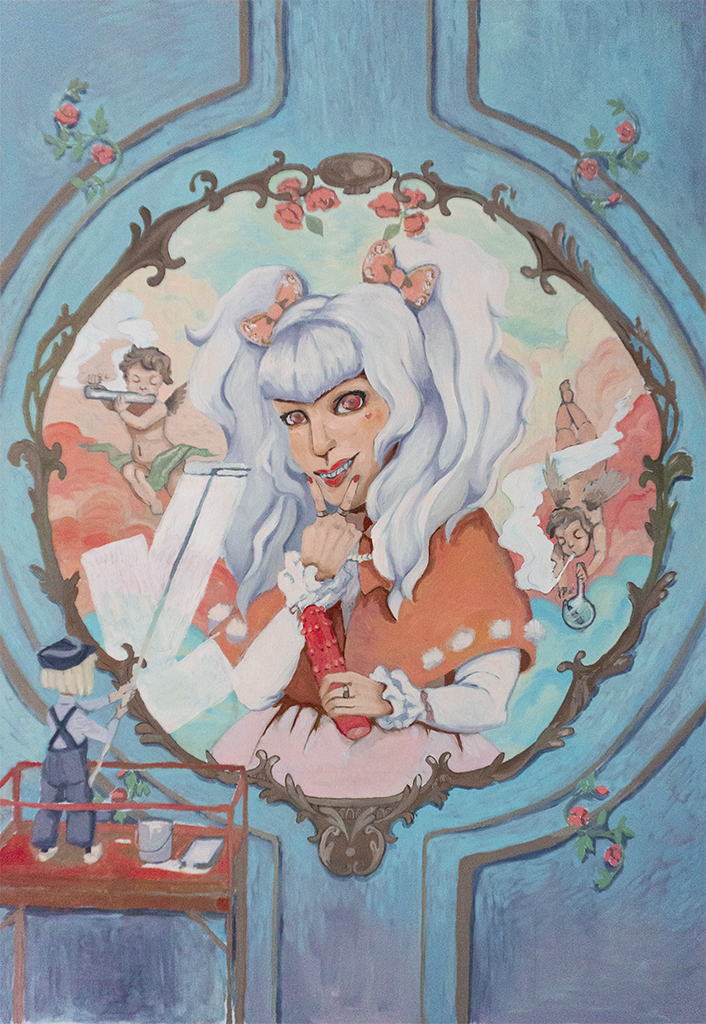Open gallery

Ashley Satterfield’s series “animal desires” is a body of paintings and ceramics that deals with human sexual power dynamics though animal bodies because after all humans are mammals too. Two recurring characters, the docile rabbit and the predatory fox are shown in scenes playing out different dramas ranging from the hunt, to sexual conquest, to limerence. Each one is its own form of the hunt through acts of destruction, sexual violence or possession of affection. The fox not only eats the rabbit but shows fondness for her as well. They embrace, kiss, lick, bite, and hump each other. While unnatural to the actual animals, these different dramas reflect common outcomes for male/female intimate interactions. Sometimes we are the fox, aggressive and selfish in our need and willing to take opportunity. Sometimes we are the rabbit, passively accepting of our roles and relishing the surrender. Sometime we fight those roles, unwilling to be eaten and unwilling to harm.
Desire made into action is a complex thing. As children we taught to fear what we desire most because the outcomes can either be ruinous or the greatest thing you’ll ever experience. Predator and prey seen commingling asks us to reflect on the nature of our own intimate relationships and if we fit those roles.
Ashley Satterfield’s “Cry Baby” is about the the way women process stress and other emotions and how society judges such emotional displays. Tears are very much a part the female experience. Studies show women on average cry more than men and yet we still live in a world where such open displays of vulnerability call into question the abilities of women especially those in high power positions. Social roles are reversing as more women seek higher education, pursue high power jobs, reject “traditional” marriages, delay child rearing, and financially support their own without the help of a male partner. Stress is overwhelming in a world that demands you should have it all. One of the best stress relievers available to women is stigmatised as childish, irrational, and undesirable. Even as children we are taught to deny ourselves the process of crying, to move on and let it go which is a very male way of dealing with unwanted issues.
“Cry Baby” embraces these misconceptions that crying is an activity for young childish girls. The exaggerated and exhaustive repetition of the crying motif asks us to reflect on western stigma against crying and why people cry in public and private.














